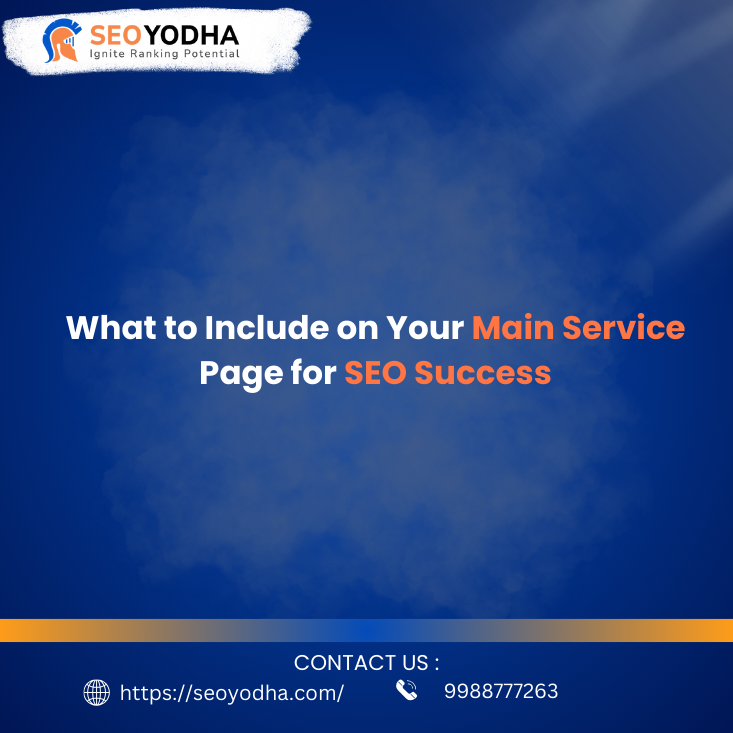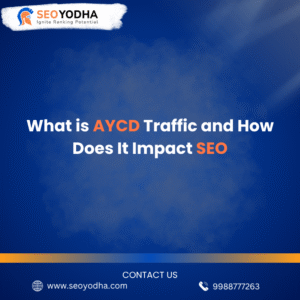Your main service page is the cornerstone of your website when it comes to attracting potential clients. It’s where you showcase your expertise, build trust, and ultimately convert visitors into paying customers. But simply listing your services isn’t enough. To truly make an impact and rank well in search engines, you need a well-optimized, SEO-friendly service page. This blog post will walk you through the essential elements to include on your main service page to maximize its effectiveness.
1. Clear and Concise Headline and Subheadings
Your headline is the first thing visitors see, so it needs to be compelling and informative. It should clearly state the primary service you offer and incorporate relevant keywords.
-
Example: Instead of “Our Services,” try “Expert Web Design Services for Small Businesses.”
Use subheadings (H2, H3, etc.) to break up the content, improve readability, and target secondary keywords. These subheadings should logically guide the reader through your service offerings.
2. Compelling and Benefit-Oriented Content
Don’t just list the features of your service; highlight the benefits that customers will receive. Explain how your service solves their problems and improves their lives or businesses.
-
Focus on:
-
Pain Points: Address the challenges your target audience faces.
-
Solutions: Explain how your service provides the best solution.
-
Value Proposition: Clearly state what makes your service unique and better than the competition.
-
Use clear, concise language that is easy to understand. Avoid technical jargon unless your target audience is highly specialized.
3. High-Quality Visuals
Images and videos can significantly enhance your service page. Use visuals to:
-
Illustrate Your Service: Show examples of your work or the results you’ve achieved for previous clients.
-
Break Up Text: Visuals make the page more engaging and easier to digest.
-
Convey Emotion: Images and videos can evoke emotions and create a stronger connection with visitors.
Ensure that your visuals are high-quality, relevant, and optimized for web use (compressed to reduce file size). Use descriptive alt tags for images to improve SEO.
4. Social Proof and Testimonials
Build trust by showcasing testimonials, reviews, and case studies. Seeing that other customers have had positive experiences with your service can significantly increase conversions.
-
Include:
-
Client Testimonials: Quotes from satisfied customers that highlight the benefits they received.
-
Case Studies: In-depth examples of how you’ve helped clients achieve specific goals.
-
Reviews: Links to third-party review sites (e.g., Google Reviews, Yelp) to demonstrate your reputation.
-
Authenticity is key. Use real testimonials and avoid making exaggerated claims.
5. Clear Call to Action (CTA)
Every service page needs a clear and compelling call to action. Tell visitors exactly what you want them to do next, whether it’s requesting a quote, scheduling a consultation, or contacting you for more information.
-
Examples:
-
“Get a Free Quote”
-
“Schedule a Consultation”
-
“Contact Us Today”
-
Make your CTA buttons visually prominent and use action-oriented language. Place them strategically throughout the page, especially after key sections.
6. Internal and External Linking
Improve SEO and user experience by incorporating relevant links:
-
Internal Links: Link to other relevant pages on your website, such as your “About Us” page, blog posts, or related service pages.
-
External Links: Link to reputable external sources that provide additional information or support your claims.
Use descriptive anchor text for your links to help search engines understand the context of the linked page.
7. SEO Optimization
Finally, ensure that your service page is properly optimized for search engines:
-
Keyword Research: Identify the primary and secondary keywords that your target audience is using to search for your service.
-
On-Page Optimization:
-
Include your primary keyword in the title tag, meta description, and H1 heading.
-
Use secondary keywords throughout the body copy and subheadings.
-
Optimize image alt tags with relevant keywords.
-
-
Mobile-Friendliness: Ensure that your service page is responsive and looks good on all devices.
-
Page Speed: Optimize your page for fast loading times by compressing images, leveraging browser caching, and minimizing HTTP requests.
By following these tips, you can create a main service page that not only attracts visitors but also converts them into paying customers.
If you need any assistance in SEO, you can try SEO Yodha.





